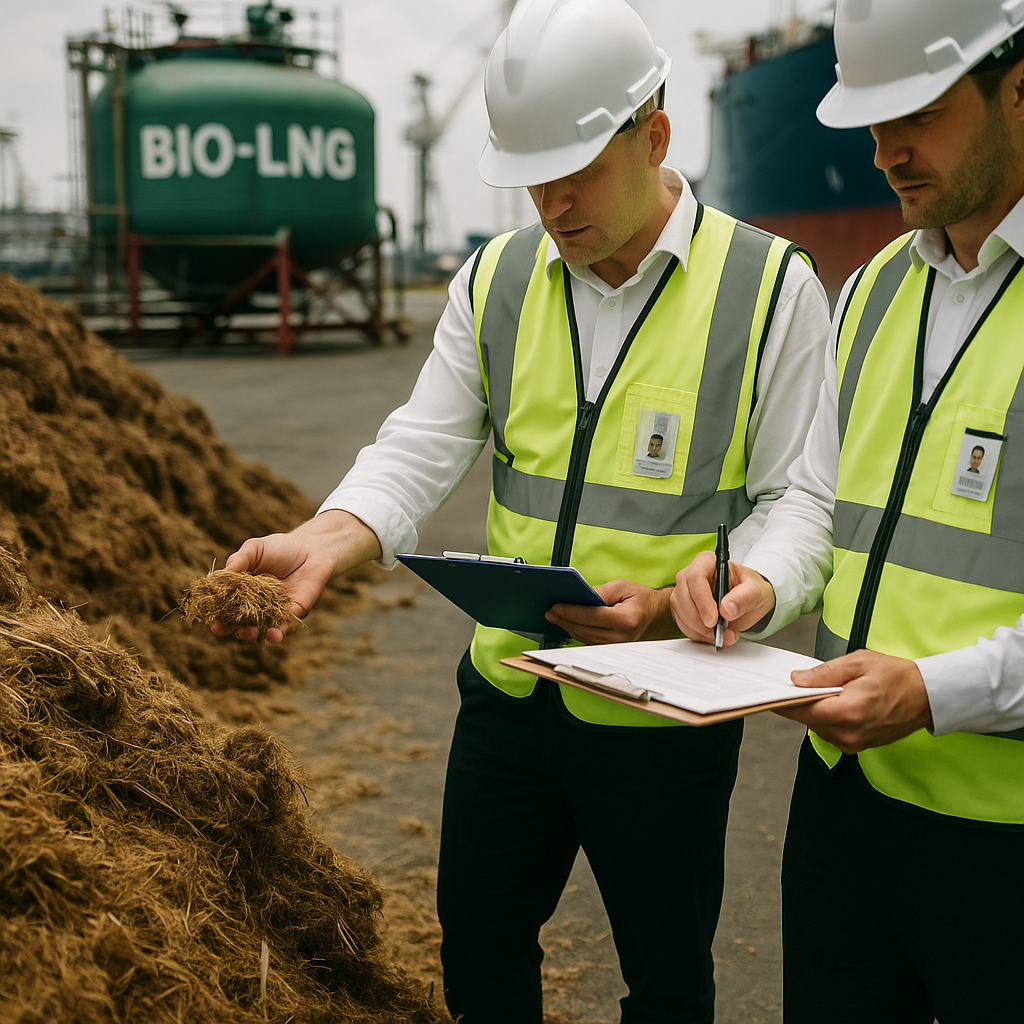
Bio-LNG: A New Dawn for Sustainable Shipping
As the global shipping industry grapples with mounting pressure to reduce its carbon footprint, Bio-LNG emerges as a promising alternative fuel. Derived from palm oil waste, this carbon-negative fuel offers a dual benefit: it not only reduces greenhouse gas emissions but also provides a sustainable solution for managing agricultural waste. This innovation is crucial now as the industry faces increasing regulatory scrutiny and the urgent need to transition to greener energy sources.
The Promise of Bio-LNG
Bio-LNG, or liquefied biomethane, is produced from organic waste materials, including palm oil residues. According to Hellenic Shipping News, the process involves capturing methane emissions from decomposing organic matter and converting it into a usable fuel. This method not only prevents methane, a potent greenhouse gas, from entering the atmosphere but also utilizes a waste product that would otherwise contribute to environmental degradation.
The shipping industry, responsible for approximately 3% of global carbon emissions, is under significant pressure to adopt cleaner fuels. The International Maritime Organization (IMO) has set ambitious targets to halve shipping emissions by 2050. Bio-LNG presents a viable pathway to achieving these goals, offering a carbon-negative solution that aligns with global sustainability objectives.
Economic and Operational Viability
The economic viability of Bio-LNG hinges on several factors, including production costs, scalability, and market acceptance. Currently, the production of Bio-LNG from palm waste is in its nascent stages, with pilot projects demonstrating its potential. The cost of producing Bio-LNG is competitive with other alternative fuels, particularly when considering the environmental benefits and potential carbon credits.
Operationally, Bio-LNG can be integrated into existing LNG infrastructure with minimal modifications. This compatibility reduces the barriers for adoption, allowing shipping companies to transition to Bio-LNG without significant capital investment. Furthermore, the use of Bio-LNG can enhance a company’s environmental credentials, providing a competitive edge in a market increasingly driven by sustainability.
Regulatory and Geopolitical Considerations
The regulatory landscape is a critical factor influencing the adoption of Bio-LNG. Governments and international bodies are increasingly mandating stricter emissions standards, creating a conducive environment for alternative fuels. The European Union, for example, has implemented policies to promote the use of renewable energy in transportation, including maritime shipping.
Geopolitically, the production of Bio-LNG from palm waste could have significant implications for countries with large palm oil industries, such as Indonesia and Malaysia. By converting palm waste into a valuable energy resource, these countries can enhance their energy security and reduce dependence on fossil fuels. Moreover, the development of a Bio-LNG industry could stimulate economic growth and create jobs in rural areas, contributing to broader socio-economic development.
Challenges and Opportunities in the Supply Chain
Despite its potential, the widespread adoption of Bio-LNG faces several challenges. The supply chain for Bio-LNG is still developing, with limited infrastructure for production, storage, and distribution. Scaling up production to meet the demands of the shipping industry will require significant investment and collaboration between stakeholders.
However, these challenges also present opportunities for innovation and growth. The development of a robust Bio-LNG supply chain could spur technological advancements and create new business opportunities. Companies that invest early in Bio-LNG infrastructure and technology stand to benefit from first-mover advantages as the market matures.
Analyst Perspectives: Navigating the Transition
Industry analysts are cautiously optimistic about the future of Bio-LNG in shipping. One viewpoint suggests that while Bio-LNG offers a promising solution, its success will depend on the industry’s ability to overcome logistical and economic hurdles. The transition to Bio-LNG will require coordinated efforts from governments, industry players, and financial institutions to create a supportive ecosystem.
Another perspective highlights the potential for Bio-LNG to drive significant environmental and economic benefits. By turning waste into a resource, Bio-LNG exemplifies the principles of a circular economy, offering a sustainable pathway for the shipping industry to reduce its carbon footprint while supporting economic development in palm oil-producing regions.
Conclusion: Navigating the Future of Shipping Fuels
The future of Bio-LNG in shipping presents a complex but promising landscape. In a base scenario, Bio-LNG could become a key component of the maritime fuel mix, contributing to emissions reduction targets and enhancing sustainability. A bullish scenario envisions rapid advancements in technology and infrastructure, leading to widespread adoption and significant environmental benefits. Conversely, a bearish scenario would see slow progress due to regulatory hurdles and economic constraints, limiting the impact of Bio-LNG.
Ultimately, the success of Bio-LNG will depend on the industry’s ability to navigate these challenges and seize the opportunities presented by this innovative fuel. As the shipping industry continues its journey towards sustainability, Bio-LNG offers a beacon of hope for a cleaner, greener future.
Sources (selection):
